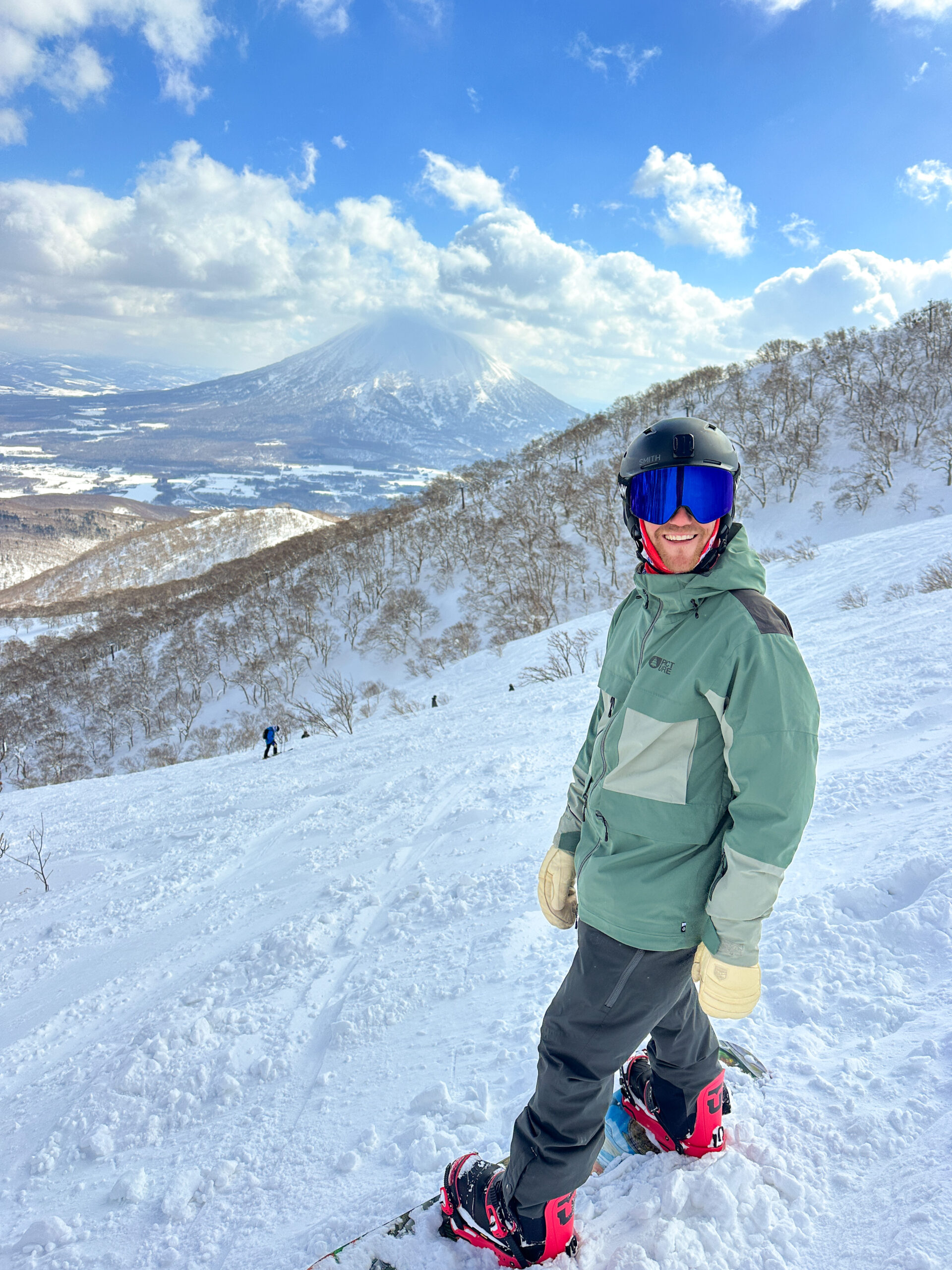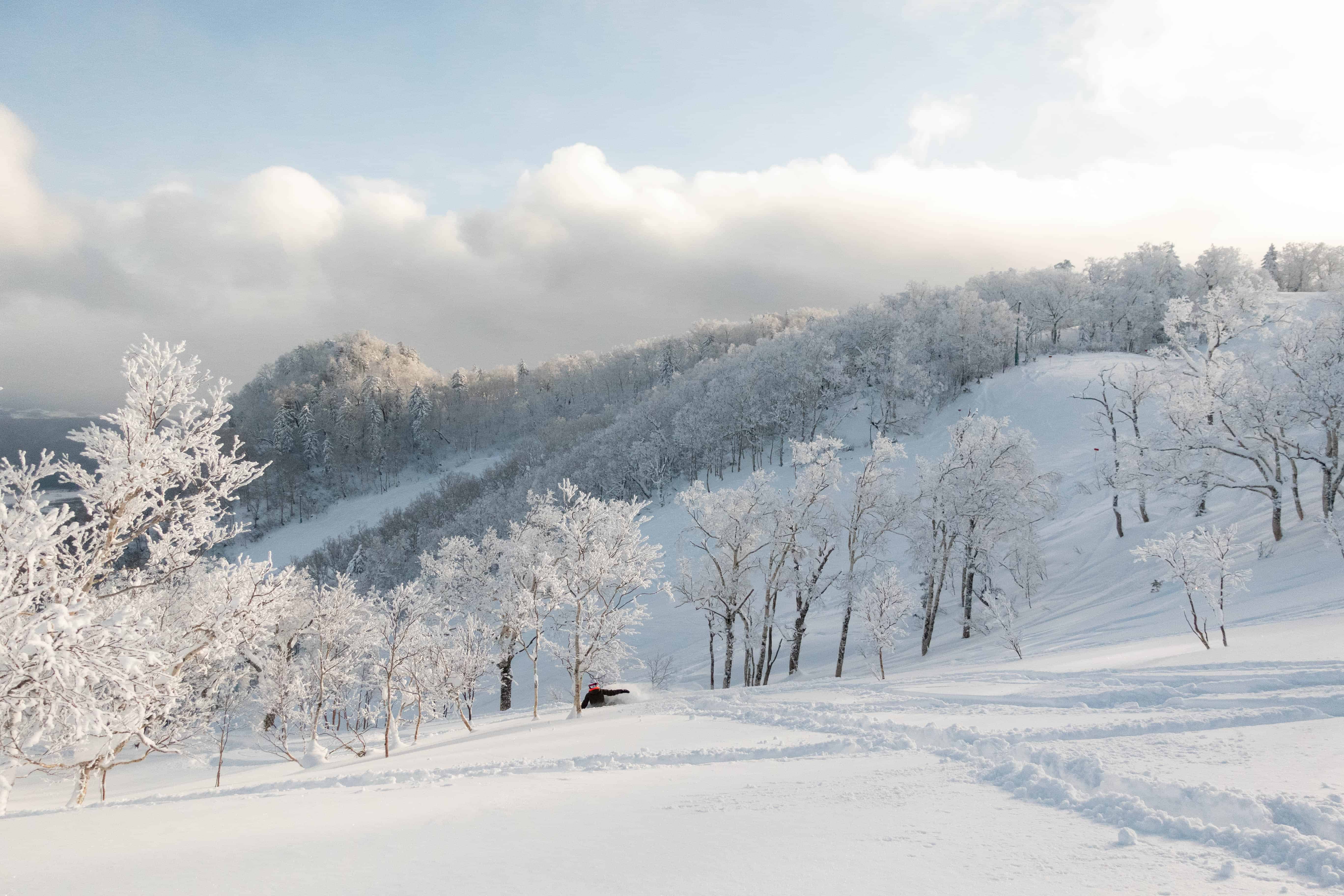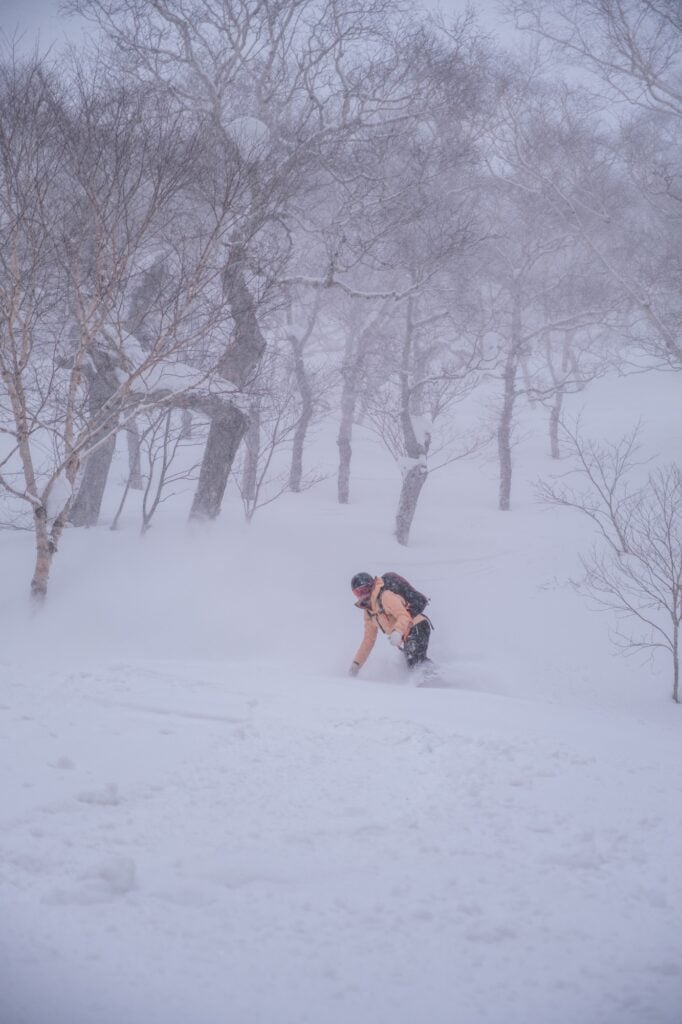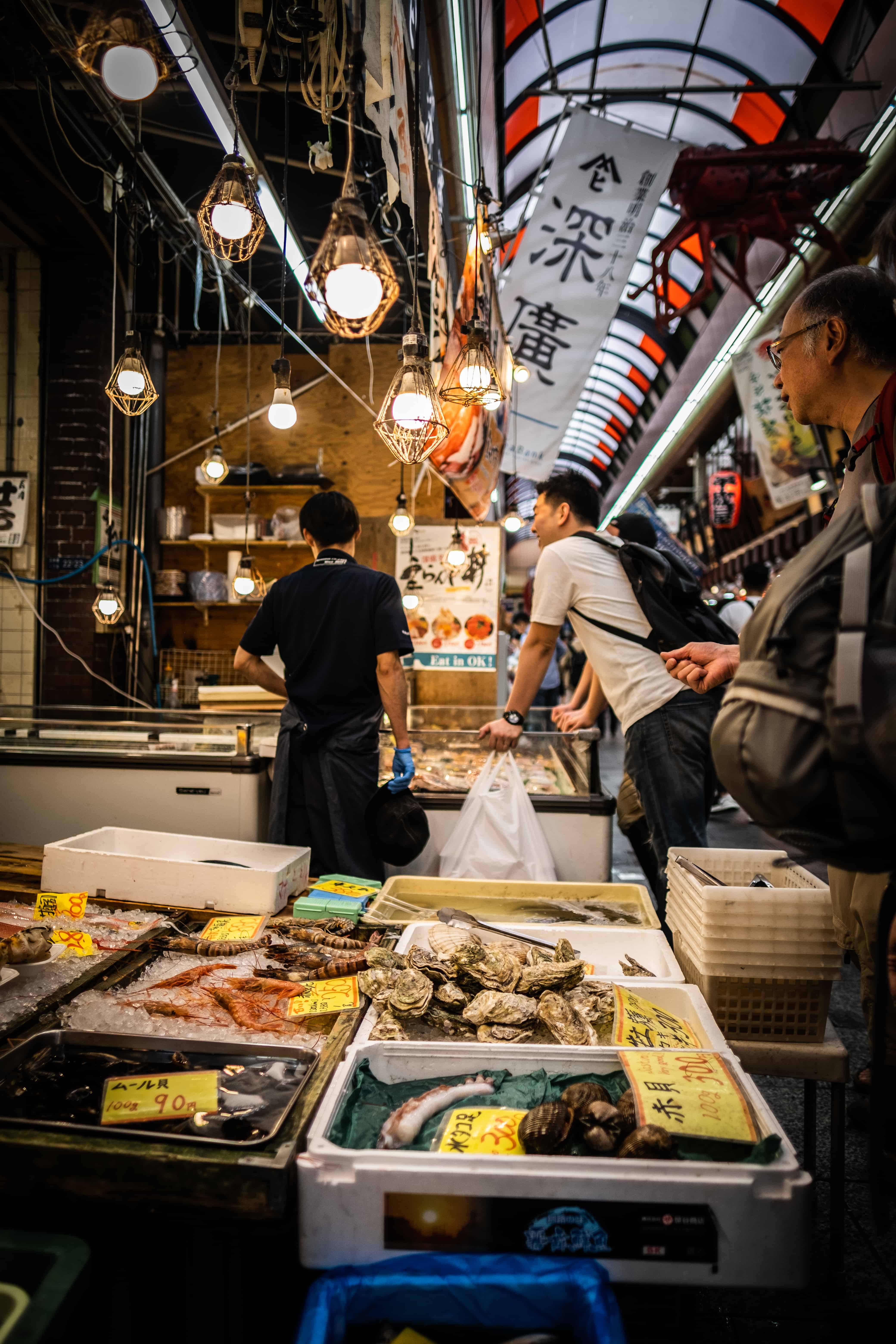How to Plan A Ski Trip to Hokkaido Japan

Skiing and snowboarding in Japan isn’t a secret anymore. Every winter, more visitors arrive searching for deep powder, hot springs, great service, rich culture, and incredible food—and Hokkaido delivers it all. Thanks to cold Siberian storms, Japan’s northernmost island gets buried in legendary “Japow,” making it a dream destination for skiers and riders.
Hokkaido offers a range of bases to suit different travel styles. Niseko and Rusutsu are the heavy hitters, boasting massive snowfall, great terrain, solid lift infrastructure, and high-end accommodations—perfect for a luxury ski getaway. Property management companies like The Luxe Nomad make ski holidays seamless. Furano balances resort skiing and a traditional Japanese town.
At the same time, Otaru and Asahikawa offer a more authentic city vibe with easy access to some of Hokkaido’s best under-the-radar ski areas. Outside the hotspots, there is still much to explore around Hokkaido, including some amazing cities such as Sapporo, which has excellent skiing. Whether you are chasing bottomless powder or immersing yourself in Japanese culture, Hokkaido won’t disappoint.
Guide To Skiing In Hokkaido

The Powder Triangle: Niseko, Furano, and Rusutsu
What is the Powder Triangle? This is a trio of these three awesome. They connect well with each other and offer some of the best powder snow experiences in the world. Niseko, famous for its stunning views of Mount Yotei and lively party scene. Rusutsu is a quieter option than Niseko and is well known for its excellent tree skiing. Furano has some of the lightest, dries snow with fantastic touring options.
Niseko

The resort is a bit of a beast in terms of skiing in Japan. It has so much to draw in visitors with its large resort infrastructure, good snow, excellent restaurants, luxurious accommodations, and tour operators. While many resorts around Japan are tiny international ski resorts, Niseko is closest to a medium-scale resort with more lifts, runs, and large terrain.

Niseko caters well to the international market with a wealth of instructors and guides who can speak English or Chinese. Which can be a rarity at most of the smaller ski areas.
The official name is Niseko United, a collection of four resorts spread across a large area. However, most hotels, restaurants, and bars are based in Hirafu. Staying here provides the best facilities, but those after a quieter ski trip will want to base themselves elsewhere.

All the positives do come with some challenges, such as crowds and a loss of Japanese culture. The resort’s best terrain also tends to get skied out pretty fast. Runs towards the base of Hirafu can also be quite crowded during peak times or holidays. A lot of this has to do with the resort being on the Ikon Pass, which is a big plus for those with the pass.
Rusutsu

Rusutsu has some of our favorite terrain and runs of any ski resort in Hokkaido. It’s also the second largest resort in Hokkaido behind Niseko United. Snow seems to bless the mountain, falling regularly here, providing excellent powder conditions when a storm blows across the island. It generally receives less snow than other resorts in the area, but it’s still around 12 meters every season!

One of the resort’s greatest strengths is its excellent mountain layout, which spans three different mountains. Beginners will enjoy the mellow, wide runs on West Mountain, and intermediates will love the large selection of runs on East Mountain and Mt. Isola.
Advanced and expert riders have many tree runs and a few steep runs to challenge themselves. Experts, in particular, will love the tree runs, the best in-bounds trees of any resort in Hokkaido. If you want to take it further, Japan’s best Heli-ski operation operates on Shiribetsu-Dake right next to the resort. We watched them lap the mountain on a bluebird day with envy.

The only downside is that Rusutsu is a resort with no real town at its base, outside of a handful of izakayas and convenience stores. Regardless, the resort operates a hotel and a nice selection of restaurants at the base that cater well to guests staying in Rusutsu. We stayed at the luxurious new Vale Rusutsu, which is easily the nicest accommodation in the area.
Furano

Many people like Furano because it has so much to offer visitors after a ski holiday in Japan. It’s a full-service ski resort with hotels at the base that can supply everything visitors need. However, what sets it apart from other resorts around Hokkaido is that Furano is an authentic town, providing a lot more culture and dining to a ski trip here. It shouldn’t be surprising that it remains immensely popular with domestic travelers.

It helps that the skiing is also pretty great. The resort has even hosted several Ski World Cup events. With nearly 900 vertical meters, the runs for intermediates and beginners are nice and long. Stronger skiers and riders will find some steep advanced runs, but most experts will be tempted by the off-piste and backcountry riding in the area. Furano has some wonderful lift-assisted backcountry.

Central Hokkaido receives less snow than other parts of the island, but it offers more reliable conditions with colder temperatures. Many other ski resorts, such as Tomamu, Sohoro, and Kamui Ski Links, are close enough for a day trip. Daisetsuzan National Park, not far away, is renowned as a powder magnet and offers the best backcountry riding in Hokkaido. We’d highly recommend that those keen to hire a guide, but book in well in advance as they’re in high demand. Furano and several Ryokans in the area make for an excellent base for backcountry skiers.
Tips for enjoying the Powder Triangle

- Time Your Visit: Plan your trip between late December and early March for the best snow conditions. January is usually peak powder season, with some of the heaviest snowfall (but also the highest prices.
- Explore Off-Piste and Backcountry: Japan’s deep powder is legendary, but follow local rules and hire a guide if you venture into the backcountry. Be aware of avalanche risks. Just because it’s Japan does not mean there are not avalanches.
- Try Night Skiing: Night skiing is a magical experience in all three Powder Triangle Resorts with floodlit slopes and untouched powder to enjoy under the stars.
- Soak in an Onsen: Relax after a day on the slopes in a traditional Japanese hot spring (onsen). It’s a must-try for its soothing warmth and cultural experience. Both The Vale Niseko and The Vale Rusutsu have onsens.
- Savor the Local Cuisine: Warm up with ramen, katsu curry, and Hokkaido’s fresh seafood. Don’t miss trying Japanese snow crab and local milk-based desserts – milk tarts are our favorite!
- Gear Up Properly: Japan’s snow is famously light and fluffy, so bring wide powder skis or a snowboard designed for deep snow.
- Get Around Easily: Renting a car is the best way to explore between these resorts and get into the backcountry.
- Learn Some Japanese Phrases: While the ski resorts are tourist-friendly, knowing a bit of Japanese (like “arigato gozaimasu” for thank you) goes a long way.
Beyond the Powder Triangle
Otaru

The coastal town of Otaru offers good access for storm riding, as the mountains outside the city get hammered with storms. Kiroro and Sapporo Kokusai are the two biggest ski areas close to the city, but some other small gems can be good for powder-hungry skiers in mid-winter. Or those still learning want some easy turns on an approachable mountain for cheap.
They cater well to beginners and low-end intermediates, but any strong intermediates or advanced riders will be disappointed. Not quite ready for the backcountry, but need a more difficult resort. That said, Kiroro has a few short, steep tree runs. The real international appeal of these two ski areas is their off-piste, side-country, and backcountry skiing that gets hammered with snow.
It’s a great little town, but it’s best reserved for more experienced skiers looking to chase storms rather than have a relaxed ski holiday. Regardless, Otaru is a compelling visit for those seeking a day off the slopes. It’s close to Niseko and Rusutsu, and has an interesting history. The famous Nikko Distillery is also not far away in Yoichi, plus Otaru is renowned for its quality sushi.
Asahikawa

While Otaru is well worth visiting even if you’re not skiing in the area, Asahikawa may feel less appealing. However, there are some awesome izakayas around the city, and it has a zoo that attracts many visitors from around Japan and Asia. The city isn’t particularly exciting, but it offers a nice dose of authentic Japan.
Kamui Ski Links Area is the best resort close to the city and one of our favorites on the island. It’s a medium-sized resort with affordable lift tickets, tree skiing zones, 600 vertical meters, a respectable number of runs, and affordable 5,300¥ lift tickets.

Another gem of a ski area is Pippu Ski Area, a small resort with only a handful of runs. It has some excellent side country and cheap lift tickets. There’s also Santa Present Park and Canmore Ski Village, two small ski areas mostly used by locals.
That said, it’s picking up in popularity among those hoping to ski or ride at Asahidake Ropeway. A sightseeing gondola offers two groomed ski routes down the mountain. However, most use it as an opportunity for some lift-assisted backcountry.
This includes Hokkaido’s most popular objective, the Asahidake Mountain, the tallest on the island. When conditions are right, it can be incredibly busy. Around the second week of March, the Kurodake Ropeway opens with more lift-assisted backcountry and even more challenging routes.
Sapporo

Sapporo is renowned in Japan for its excellent food, incredible Snow Festival, buzzing nightlife, and cultural sites. Like anywhere in Hokkaido, it has some wonderful skiing that is close to the city center. There are so many local food specialties that it’s tough to name them all, but some highlights include miso ramen, snow crab, mutton BBQ (Genghis Khan), sushi, and milk tarts. The city also has one of Japan’s most famed brewers, the Sapporo Brewery, which has a museum for visitors.
Outside the food and cultural sights, there are some great ski resorts close to the city, such as Sapporo Teine. The ski area is well known for having some of the steepest ski runs in Hokkaido. That said, it still has some mellow runs for beginners and intermediates. Sapporo Kokusai is also close enough for day trips and is well worth a visit. It’s one of the snowiest resorts in Japan. Granted, Otaru is much closer to the resort.
Even if you don’t plan to ski around the mountain, it’s well worth adding to an itinerary for those visiting Hokkaido. We haven’t taken a ski trip without visiting the city for at least a day or two.
More Ski Resorts

Three other ski resorts are very popular with visitors due to their resort facilities and ski hotels. We’ve already mentioned Kiroro, which has a Club Med and two other luxury hotels at the base. Two other popular ski areas with resorts at the base are Tomamu and Sohoro.
The ski resorts are similar to Rusutsu but smaller and fly more under the radar. They are a great option for well-heeled travelers who want a full-service resort with English-speaking instructors. Powder chasers and those with a vehicle will enjoy them as day trips. However, the lack of accommodation supply does drive prices up at these medium-small sized resorts.
How to Get to Hokkaido

Most visitors to Hokkaido will fly into New Chitose Airport (CTS), the largest airport on the island. It’s largely a domestic hub, but it does handle several international flights around Asia from China, Korea, Taiwan, and Thailand. Catching a domestic flight from Tokyo to Asahikawa Airport (AKJ) is also possible for those visiting Central Hokkaido.
The Shinkansen high-speed train runs from Tokyo Station to Hakodate in about 8 hours. Work is underway to extend the line to Sapporo, but it’s delayed by at least a decade. From Hakodate, visitors can rent a vehicle, hop on a local train line, or ski bus to the resorts and towns around Hokkaido.
Getting Around Hokkaido

Public Transport
Most visitors to Japan choose to utilize the country’s excellent public transportation system. It’s possible to reach all the major ski areas with a combination of public and private means. Train lines connect all the major city hubs. At the same time, private bus companies such as Resort Liner operate routes to the major ski areas, such as Niseko, Kiroro, Rusutsu, Tomamu, Sohoro, and Furano.
Rental Car

If you’re chasing powder, it’s best to rent a vehicle. This allows you to chase snow and reach backcountry ski routes. Almost all providers put winter tires on their cars as required by law, but winter conditions can be challenging with all of the snow. Since temperatures are often mild at low elevations, the roads have a nasty habit of being very icy. We found it challenging at times, and we live in Western Canada and regularly drive in winter conditions.
In a country with limited English, there are quite a few road signs around Japan in English, and we did not have difficulty navigating with a GPS. However, we would only recommend driving in the country for confident drivers. It’s also the law that all international drivers have an IDP, a certified translation of their driving license.
Where to Stay

Hokkaido offers a diverse range of accommodations catering to every type of skier, from budget-conscious powder seekers to luxury travelers looking for a refined alpine escape. At major resorts like Niseko, Furano, and Rusutsu, you’ll find everything from traditional ryokan (Japanese inns) with onsen facilities to modern ski-in/ski-out hotels and self-contained chalets.

Niseko, in particular, has a strong international influence, with high-end condos and boutique lodges offering a blend of Japanese hospitality and Western comforts. Furano, known for its quieter atmosphere, provides a mix of family-run pensions, mid-range hotels, and stylish apartments perfect for longer stays.

For those looking for an elevated experience, luxury chalets and villas have become increasingly popular. They offer privacy, top-tier amenities, and personalized services. The Luxe Nomad curates a selection of premium stays in Niseko and beyond, catering to travelers who want a balance of comfort and convenience while being close to some of the best snow in the world.

We stayed at the Vale Niseko, the Vale Rusutsu, and the Fenix Furano. All of them were wonderful ski-in-ski-out hotels with phenomenal access to the mountains.
Beyond the main resorts, smaller ski areas like Kiroro, Tomamu, and Asahidake offer a more local feel. They mix high-end hotels, cozy lodges, and traditional guesthouses. These areas provide a quieter, more immersive Hokkaido ski experience, often with easy access to uncrowded runs and legendary powder.
Whether you’re after a no-frills base to chase powder or a stylish retreat to unwind after a day on the slopes, Hokkaido’s accommodation options are as diverse as its terrain.
Use code THEWORLDPURSUIT for 5% off all Luxe Nomad stays!
Costs

Skiing in Hokkaido can be very varied and cost-effective. The island caters to both luxury and budget travelers. This is particularly true considering that daily lift ticket prices are affordable at most ski resorts. Hokkaido’s highest lift ticket prices are at Niseko United, which costs 10,000 Yen a day, which is a deal for those coming from North America.
Accommodation
Costs here run the gamut, and there is a huge discrepancy between the most budget-friendly options and luxury ski-in-ski-out accommodations. On our last trip, the average price for a simple room was ¥20,000 in cities like Otaru, Sapporo, and Asahikawa. However, rates for accommodations in ski resorts like Niseko, Rusutsu, and Furano will be far higher.
Niseko is the most expensive, while Furano, Rusutsu, and lesser-known resorts offer more affordable options. Private chalets and luxury accommodations, like those curated by The Luxe Nomad, cater to travelers seeking exclusivity and premium service.
- Budget (hostels, guesthouses, pensions): ¥7,500–¥18,000 per night
- Mid-range (hotels, ski lodges, apartments): ¥22,000–¥60,000 per night
- Luxury (chalets, resorts, high-end hotels): ¥75,000–¥300,000+ per night
Lift Tickets

- Major resorts (Niseko, Furano, Rusutsu): ¥7,500–¥11,000 per day
- Smaller resorts (Asahidake, Kamui, Pippu): ¥3,500–¥7,500 per day
- Multi Resort passes such as the Ikon and Epic offer skiing to pass holders at Niseko and Rusutsu, but that does draw more crowds.
Equipment Rental
- Skis/snowboard + boots: ¥6,000–¥9,000 per day
- Full package (including outerwear): ¥7,500–¥12,000 per day
Booking rentals in advance, especially in Niseko, can help secure better prices.
Food & Drink
- Budget (convenience store meals, ramen, izakayas): ¥1,500–¥3,000 per meal
- Mid-range (casual restaurants, cafés): ¥3,000–¥7,500 per meal
- High-end (kaiseki dining, premium sushi, resort restaurants): ¥12,000–¥30,000+ per meal
Japanese convenience stores like 7-Eleven and Lawson offer surprisingly good and affordable meals, while traditional izakayas provide an authentic and social dining experience. We’re pretty big fans of the fried chicken at Lawson, and it has no business being so good.
Transportation
We had a decent deal for our rental car, but in general rental car rates are pretty expensive. If you plan to only visit one or two resorts with no plans to go ski touring, you’re probably better served by public/private transport.
You can reach many ski resorts with public transit or shuttle buses run by the resorts from neighboring cities. Visitors can even hop private shuttle buses that pick up form resorts like Niseko to enjoy a day of skiing at nearby resorts like Kiroro or Rusutsu.
- Shuttle from New Chitose Airport to Niseko/Furano: ¥6,000–¥9,000 one way
- Train from Tokyo to Hokkaido (if skiing in Honshu first): ¥18,000 – ¥22,000 (Shinkansen)
- Car rental (for flexibility and access to smaller resorts): ¥7,500–¥15,000 per day + fuel
- Local buses & taxis: ¥1,500–¥7,500 per ride
Guided Tours & Backcountry Access
We did not hire a guide, but we have backcountry experience in far more complex terrain from the Canadian Rockies. It’s certainly possible for experienced backcountry travelers to go on their own, but we do not recommend it to most.
- Group guided tours: ¥15,000–¥30,000 per person
- Private guide (for backcountry or side-country skiing): ¥45,000–¥90,000 per day
- Cat skiing or heli-skiing: ¥45,000–¥150,000+ per day
Overall Budget Estimate (Per Person, 7 Days in Hokkaido)
Hokkaido’s skiing can be surprisingly affordable compared to North America or Europe, especially considering the snow and food quality. We were able to come in regularly at the very bottom end of the budget range.
Niseko’s international popularity has driven up costs, making alternative resorts like Furano, Rusutsu, or Kiroro attractive for those seeking better value. However, it’s tough to compete with Japan’s biggest resort in terms of services.
- Budget: ¥150,000–¥375,000
- Mid-range: ¥450,000–¥825,000
- Luxury: ¥1,050,000+
Ski Season and Best Time to Visit

The ski season in Hokkaido packs a punch as it’s short and strong. Unlike North America and Europe the ski season is much shorter, especially if you’re after powder snow conditions. The peak months for powder are from December to February, with January often referred to as “Japanuary.”
March to April does not offer much in terms of powder riding, but the longer days and more mild weather makes for pleasant spring skiing conditions. It’s also a good time for a deal as rates begin to drop sharply in March. We had excellent conditions on our trip from the beginning of February to mid-March.
Last Note On Safety

As Japan continues to increase in popularity and the masses of powder-hungry Westerners arrive at the country’s ski resorts, many more incidents have occurred. It appears that the snow and its mountains have earned a reputation for being more “safe,” which is untrue.
There’s also a real drive from social media and the desire to find untracked “powder,” which pushes visitors to ski into dangerous areas unprepared. The terrain around the country is anything but benign and presents many challenges that some skiers are not used to at home.
Hazards such as creeks, rivers, thermal vent holes, tree wells, and glide cracks have resulted in many unfortunate outcomes in recent years. Avalanches can still occur in Japan, and with the winter storms, we found wind slabs throughout our trip on many leeward slopes.
If you’re off-piste, we highly recommend that you always have a ski buddy. There are countless hazards within the ski area boundaries, not to mention the risk of colliding with a tree, as that is the majority of skiing in Japan.
If you plan to venture into the backcountry, we highly recommend hiring a guide or approaching the mountains responsibly. Take a course back home, spend time navigating backcountry terrain, get the right gear, and take it slow. It takes time to learn to read the terrain in Japan as it is very different than North America/Europe.







